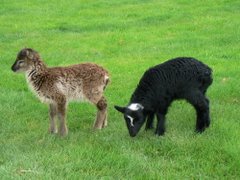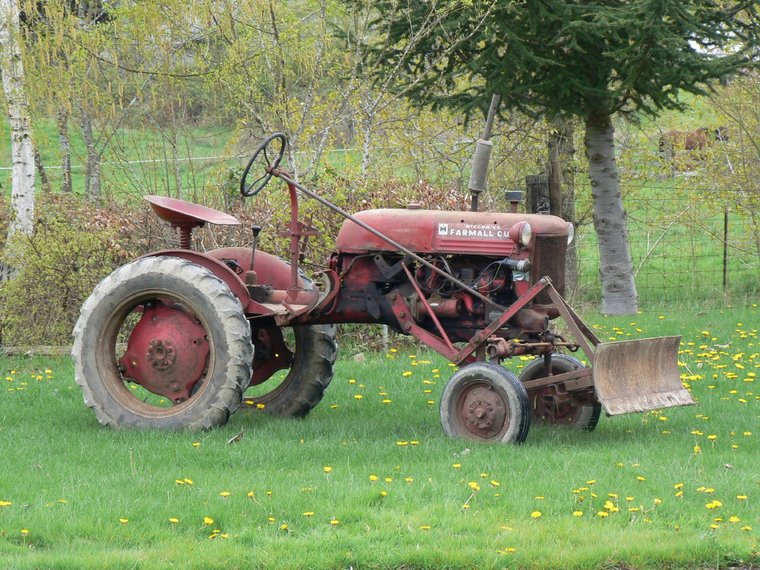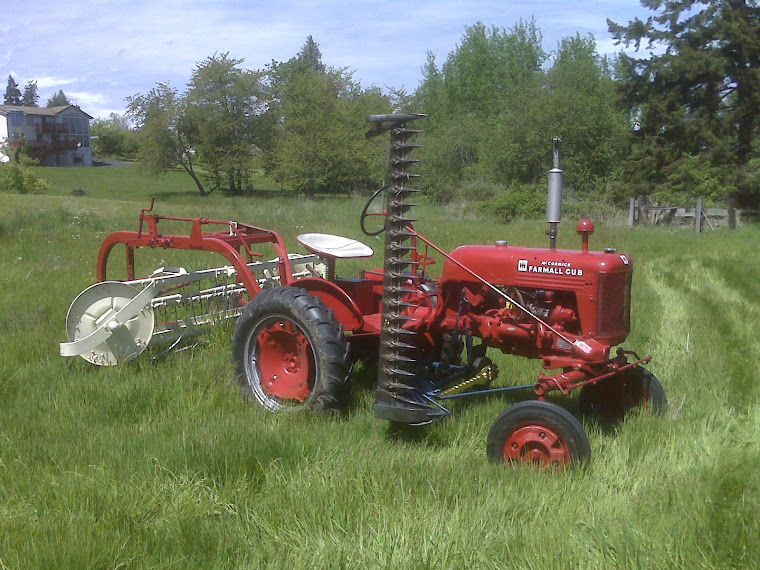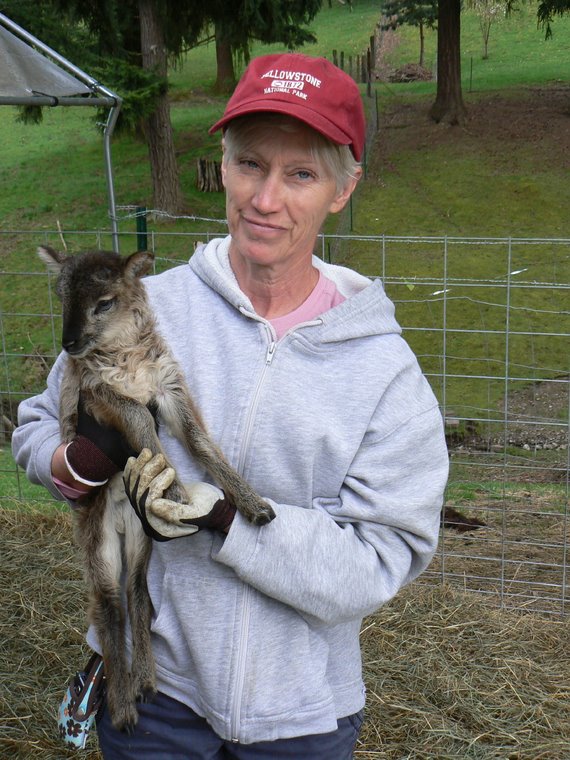
Both the new Soay orphan ram lambs, Jack and the newly-named Champ, are feeding well and both go out with the ewe flock for the day. Both look very strong, and although there was some sign of scours developing, we tried the canned goat's milk diet starting mid-Saturday, and that seems to be 'firming them up'. Kaity, our daughter, is quite smitten with the tiny new lambs.
My plan for the day was to visit yet another long-time Soay sheep breeder who lives up north on Camano Island - Tracy Teed. Tracy has a very interesting Soay sheep flock. In many ways she has duplicated, in isolation from other flocks, the "regeneration" of a Soay phenotype when starting with a very small starting base of Soays and utilizing some unavoidable (and unfortunately fairly un-traceable) mixing of other breeds. This is essentially the history of the so-called "North American" Soay group in the Pacific Northwest. (This history can be best read on Kathie Miller's Southern Oregon Soays website.)
At any rate, the current Teed flock arose from only 7 Soays that were carefully chosen (by phenotype) in 1999 from a 11-year "open-flock breeding" that began in 1988 with Soays from Bev Driscoll down in Oregon. Bev got her stock from Dean Lewis (also in Oregon), who brought the first Soay ram into the Pacific NW US in about 1985. I have worked with Tracy to document the flock development, including historical photos, and someday hope to get that information organized enough to post.
So Tracy's flock has grown exponentially since the 7-Soay start in 1999. There have been no outside additions to the flock, and it was always run as a fully open-breeding flock - whatever ram(s) were most persistent were successful at breeding. A few rams were removed fromt the flock over the years, but largely they were left alone. When I first visited in 2005, I was amazed at the phenotypic diversity, which clearly showed presence of considerable genetic diversity for coat color genes. Of course the bulk of the flock was typical dark phase wild (or mouflon) pattern, there was also about 5% self-colored blacks (dark phase), and also perhaps 10% exhibited white spotting. I acquired 5 Teed Soays in that first visit, and intended to re-visit and check out new lambs each year.
Fast forward to a couple weeks ago, and Tracy tells me she is planning a major flock reduction. I figure I better get up there and check them out before missing out on ones I might like to add to my breeding program. Anyone familiar with my Soay interests will know that one line I am cultivating is self-colored blacks. So not only do I find two very fine-looking self-colored black ewes at Tracy's, she shows me her pen of bottle-fed orphan lambs and I decide to also take an unusual white-faced ewe lamb as well. Here are the 3 new Teed Soay sheep we added to our flock. (Click photo to enlarge).


The ewe on the left, polled, has been named Tlingit. The ewe in the center (one I spied, and coveted, in 2005, and now finally own!) is named Cariboo. She has (for a self-colored black Soay) an unusual very light coloration to her horns. Finally, on the right, unfortunately looking away from the camera in this photo, is white-faced orphan ewe lamb, Sadie.
So here we are, in only 40 hours going from never having a bottle lamb to having 3 going at once.
We have spotted, in the last few weeks around here, one or more bald eagles flying very low, seeming to check out neighboring farms lambs. I am very concerned for our tiny Soay lambs safety. While out checking on the new orphan lambs on Sunday, I was startled when I suddenly realized that a pile of dried leaves I was passing had something alive in it's midst. Here a photo of a pretty effectively camouflaged day-old Soay lamb (Champ). (Click photo to enlarge).






No comments:
Post a Comment